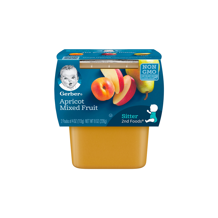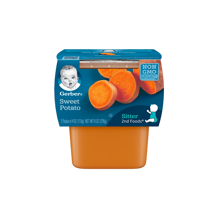
What is artificial insemination?
Artificial insemination is a widely used fertility treatment that involves directly inserting sperm into a woman’s uterus or cervix to help achieve pregnancy. This method can increase the chances of fertilization by reducing the distance sperm must travel to reach the egg increasing the chances for conception.
It’s a surprisingly old fertility treatment as the first successful artificial insemination was performed by a surgeon back in 1790! From then on, the procedure has become even more advanced as our knowledge of human reproduction has increased.
It’s a less invasive and often more affordable option compared to other assisted reproductive technologies, like in vitro fertilization.
How does artificial insemination work?
Artificial insemination is a rather simple procedure; it works by introducing specially prepared sperm into a woman’s reproductive tract at the time of ovulation. The goal of this procedure is to bring good quality sperm closer to the egg, thereby increasing the chances of fertilization.
The most common form is intrauterine insemination (IUI), where sperm is placed directly into the uterus using a thin catheter. Before the procedure, sperm is prepared in a lab to concentrate healthy sperm and remove any impurities or subpar sperm cells.
Timing is crucial for this procedure, as it must be done during the woman’s ovulation cycle. This process is often monitored through blood tests or ovulation kits to ensure the procedure aligns with the most fertile window.

Who is artificial insemination for?
Artificial insemination can be very helpful for individuals and couples experiencing a variety of fertility challenges. It may be suitable for:
- Men with low sperm count or motility: in some cases, a man may have a low count of viable sperm, or may have cells that are viable but can’t move very well, in this case artificial insemination helps by pre-selecting viable cells and helping them to get close to the egg cell.
- Women with cervical mucus issues that hinder sperm movement: it may also be the case that the cervical mucus of a woman makes it harder than normal for sperm cells to move. In this case the procedure helps the sperm to bypass the mucus.
- Couples experiencing sexual dysfunction that prevents intercourse: in this case artificial insemination fills in the role of intercourse.
- Individuals using donor sperm: such as single women or same-sex female couples.
It can also be a first-line treatment for couples who want to try a less invasive and more cost-effective approach before moving on to more advanced fertility options such as in vitro fertilization.
When is artificial insemination a viable fertility treatment?
Artificial insemination is typically recommended after at least one year of unsuccessful attempts to conceive naturally (or six months for women over 35). For it to work the following conditions must be met:
- Both sets of reproductive cells (sperm and eggs) must be viable: the woman must have open fallopian tubes and regular ovulation, also the sperm sample must have a reasonable chance of fertilizing the egg, this procedure doesn’t work in cases of sterility.
- The woman must be able to get pregnant: If there are biological challenges for pregnancy rather than fertility, the procedure may not work, as it is only a way to ensure the egg is fertilized, further reproductive developments aren’t aided by the procedure.
- The procedure must be done with strict timing: artificial insemination is very time dependent, for it to work it must be done during the ovulation cycle when the egg cell is ready for fertilization. In some cases, ovulation stimulants are provided to help increase the chances of success.
An overview of how the artificial insemination procedure works
Artificial insemination is a relatively simple and minimally invasive procedure. The process begins with tracking the woman’s ovulation cycle, either naturally or with fertility medications.
Once ovulation is confirmed or induced, the sperm sample is collected and prepared in a lab to select the healthiest, most motile sperm to increase the chance of fertilization.
The insemination itself is performed in a clinical setting and usually takes only a few minutes. The patient is usually asked to lie down for a short period afterwards and then can return to normal activities on the very same day. Results are typically evaluated through a pregnancy test two weeks later.
What to expect during the procedure?
During the procedure, a fertility specialist uses a thin, flexible catheter to insert the previously prepared sperm sample directly into the uterus. It is generally painless, though some women may experience mild cramping or discomfort alike to that of a pap smear.
The success rate of artificial insemination varies depending on age, underlying fertility issues, and whether fertility drugs are used, but many couples find it to be a promising and accessible fertility solution.
FREQUENTLY ASKED QUESTIONS
1. Is artificial insemination painful?
Artificial insemination is generally not painful. Most people describe the sensation as mild discomfort or light cramping, similar to a routine pelvic exam. Any discomfort typically subsides quickly after the procedure.
2. How many cycles of artificial insemination are usually needed to get pregnant?
Success rates increase with multiple cycles. Many fertility specialists recommend trying up to 3–6 cycles of artificial insemination before considering other treatments. The cumulative success rate over multiple cycles can be significantly higher than with a single attempt.
3. Can artificial insemination be used with frozen sperm?
Yes, frozen sperm, whether from a partner or donor, can be used for artificial insemination. The sperm is thawed and processed in a lab before the procedure. Frozen sperm is commonly used in cases involving donor insemination or sperm banking due to medical treatments.
SOURCES
Everything You Need to Know About Artificial Insemination, Rachel Nall, Mar 8 2023 obtained from https://www.healthline.com/health/artificial-insemination
Intrauterine insemination (IUI) , Mayo Clinic, Sept 12 2023 Obtained from https://www.mayoclinic.org/tests-procedures/intrauterine-insemination/about/pac-20384722
What to know about artificial insemination, Michael Paddock, Sept 27 2018 obtained from: https://www.medicalnewstoday.com/articles/217986








